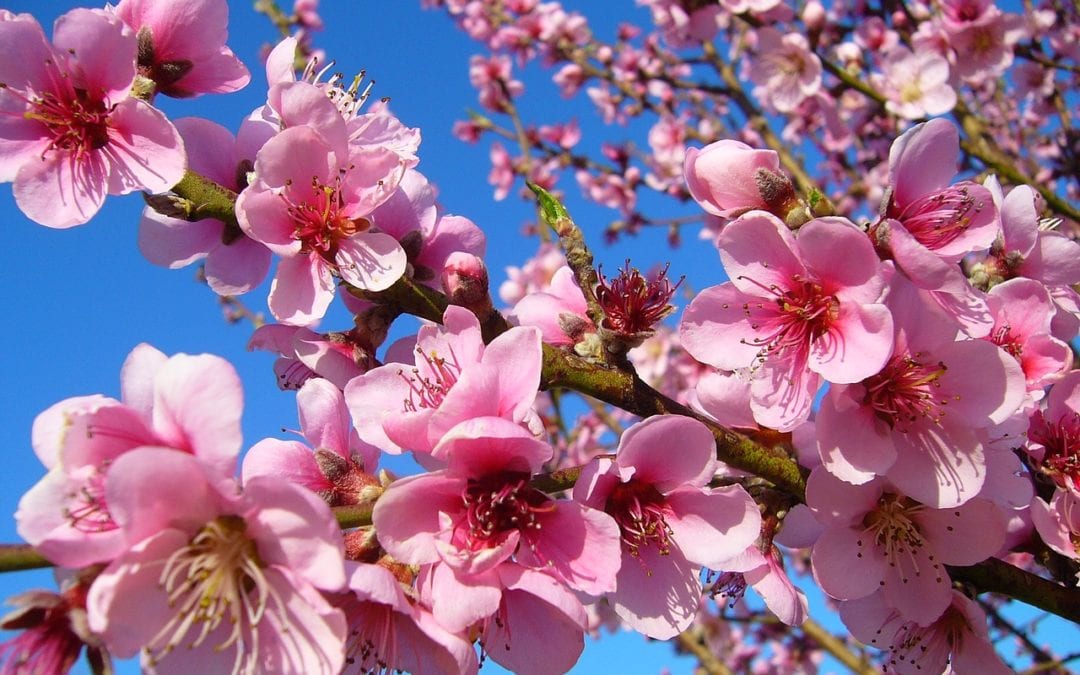If you are thinking of adding some fruit trees to your landscape, this is the perfect time of year. Winter and early spring usually offers the best selections from the nurseries. We recommend you do some research on the variety you are interested in. To successfully grow fruit trees, you need to offer them their basic requirements like sunlight, soil, air circulation, water, and required chill hours. It is also best to purchase fruit trees that are specifically recommended for the area you live in.


Basic Requirements for Fruit Trees
1. Full Sun for Fruit Trees
-Full sun for fruit trees means just what it says, FULL sun. Fruit trees planted where larger tree end up shading them can suffer in fruit production, and may end up with more disease issues.
2. Adequate Water for Fruit Trees
-Fruit trees will need plenty of water to get their roots established. Once established, they will need plenty of water to produce healthy, sizable, quality fruit. Make sure that the area you desire to plant in has a water source that is easily accessible.
3. Good Air Circulation for Fruit Trees
-Making sure your fruit trees are not planted too closely together, or too close to other trees and shrubs is imperative to preventing leaf and fruit disease that can easily be spread amongst trees that are crowded in a landscape.
4. Good Soil for Fruit Trees
-Sandy loam soil is the best type of soil for most fruit trees. You should have at least a 3-4 feet depth of this type of soil to plant your in. Soil should also be well-draining.
Chill Hours for Fruit Trees
Most fruit trees have particular chill hours that need to be met in order to grow successfully.
Chill hours are the number of hours that temperature needs to be lower than 45° and higher than 32° before an individual variety of fruit tree will set buds and blossom.
The general range of chill hours for the city of San Antonio runs from 400-600 chill hours, but with our many microclimates throughout the city it’s best to do your research. You can learn more about fruit chill hours at our blog, “Chill Hours and Growing Fruit Trees in San Antonio”.
Some extra things to research when thinking about adding fruit trees to your landscape.
Will your fruit trees need a pollinator? Many fruit and nut trees require a different variety of fruit or nut to be planted within its vicinity in order to produce a good harvest. If you are lucky enough to have a neighbor growing fruit trees next door you may not have to buy another one to pollinate your own, but generally the rule of thumb is that ALL fruit and nut trees produce far better when offered a pollinator. You can access some amazing info on growing fruit in Texas from the TAMU Agrilife Extension Service site. They have multiple links and tables for specific fruit and nut varieties.
Do you know the number of years it will take for your fruit tree to produce an actual, true harvest? Some fruit and nut trees can take years to bear produce and give you the bushels of fruit and nuts you envision when planting them. (Same goes for berry bushes and olives, by the way.) While figs can take 2-3 years to produce a true harvest, plums, peaches and nectarines can take 3-4 years, and pecans can take 6-10 years for a harvest to brag about. When fruit and nut trees are grown successfully, the wait is worth it!
It’s always best to take a look at the most up-to-date recommendations for the area you live in. The TAMU Agrilife Extension website is a great source for this. Varieties that have been tested, and are recommended by our top professional local horticulturists through their observations, have a good reputation of being dependable choices.
~The Happy Gardener, Lisa Mulroy


I am thinking of planting a peach tree . We just moved to Bandera, Texas about a mile from Medina lake. My husband said we are sitting on a limestone shelf and is concerned there is not enough soil for the roots. Any suggestions?
Hi Elda,
We would suggest building your soil up in a raised bed for a peach tree. You will need a 4’x4′ area per tree, and build soil to a minimum depth of 18″. Dig as far as you can and then add the garden soil The richer the soil you can offer the better. Happy Frog soil is a premium and a great product, or at least our Jungleland soil. Pine Bark should be applied as mulch every 6 months or so. Hope this helps.